Despite not being universally known, some of the weirdest festivals in Spain occur all around the country, not only in Pamplona or in Buñol.
Spain is known for fiesta and siesta. Then because of Paella and chorizo. And then, because of our sun and beaches. The truth is that when you look deeper, there are some unique things typical to Spain that sometimes make it to famous travel blogs or the local news now or then. What would these be? Well… have you ever heard of the San Fermines? La Tomatina? If there’s something we have in Spain are strange festivals. Here you have a compilation of the weirdest and most insane festivals in Spain.
Disclosure: Some of the links below are affiliate links. This means that, at no cost to you, I will earn a small comission when you purchase something that will help me keep this blog alive.
The weirdest festivals in Spain
In this list I will include some of the most known and weirdest festivals in Spain but also some other well known and with a stronger historical weight.
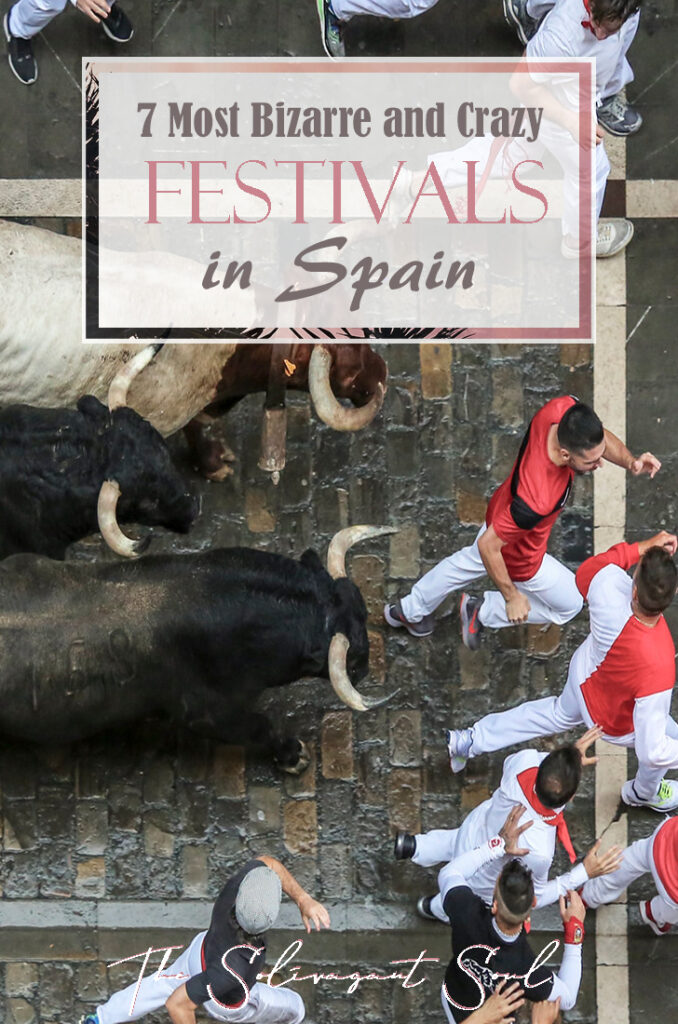
San Fermines, Pamplona
Where?
Pamplona, Navarra
When?
From July 6th and ongoing for 8 days.
Why?
The San Fermines derives from the fairs that were celebrated around the Sain Fermin (aka, San Fermín). Even though not one of the weirdest festivals in Spain, they are definitely the most known. These fairs were initially celebrated for the summer solstice, but later on they moved to the end of the month of June to celebrate Saint Peter.
Because these fairs were often places where people would buy and sell animals, they started to run the bulls in Pamplona. Another festivity that was popular in the city was the Fair of Pamplona, often occurring October 10th. Halfway through the 16th century, they decided to combine both fairs on the same date, and for that, they decided to create the San Fermines the seventh day of the seventh month: July 7th.
What are they?
Although the festivities where set to start July 7th, today they are initiated July 6th at noon with the typical Chupinazo. This event consists of a known individual giving a speech from the city hall’s balcony followed by some pyrotechnic fires. After that, everyone celebrates on the square below the city hall and the party officially starts.
The following days and for a week, every morning people will gather on the streets before 8am to prepare for the race. The well-known race where people run before (and after, and below) some of the most impressive bulls (raised for this purpose). This race ends at the Plaza de Toros after going through less than 1Km (0.8mi). Even that may look like a lot to run at top speed, most of the times, the whole race lasts less than 2 minutes. If you want to run, make sure you are fit and not drunk (You won’t be allowed to run inebriated). The same afternoon of the races, there will be a bullfight with the bulls that run earlier that day.
Fun fact
Before running, every day, people gather in front of a small saint idol and sing a son. Three times within 5 minutes. First in Spanish followed by Euskera. After that, people get in position and with a small firecracker, the bulls are let out.
Where to stay?
People rent their balconies to people who want to see the races from above. And for a good price, let me tell you. Visiting the San Fermines can be expensive because, while they are some of the weirdest festivals in Spain, they are also immensely popular. My recommendation would be to either find a pension or a hotel outside the center of the town for an average-to-high price, or splurge a lot and get a good location and a nice room.
For the people with fine taste and love for the design that combines modern and classic touches, you can visit the “Gran Hotel La Perla”. Located in the center and with excellent staff and comfort. A cheaper alternative, but still nice is the “NH Pamplona Iruña Park”. I have personally been there and it is a very comfortable hotel that, while it is far from the center, it is easily reached by foot or public transportation.

Tomatina, Buñol
Where?
Buñol, less than one hour away from the city of Valencia.
When?
Last Wednesday of August
Why?
Even though there is not a consensus on how the tomatina really started, most people agree that it happened during the 20th century. Some say it started when someone was singing in one of the main squares of Buñol and because he was doing such a great job, they throw him some tomatoes.
Other people say that it derives from a fight between some youngsters and a party committee of “big heads”. These are people who dress up as giants with a very large head typical from Catalonia and Valencia. They were having an argument that it became a fight. Unfortunately, there was a vegetable stand, and they ended up throwing themselves vegetables. Then a year later they brought the vegetables from home.
What is it?
This is one of the weirdest festivals in Spain not only for its nature but because it is strange as hell. During the Tomatina, people will throw themselves tomatoes. If you are nice, ripen tomatoes, if you want to be mean, green tomatoes. Since 1975, though, the city hall is the one providing the tomatoes, so you no longer need to bring in yours! Additionally, for all of you thinking of how expensive tomatoes are, think that here in Spain, 1kg of tomatoes (2.5 pounds) can cost around 0.30€. So it is not that much.
Where to stay?
The weirdest festival in Spain happening in Valencia occurs in the midst of summer, so the prices of any hotel will be as high as they will get. Taking this into consideration, Buñol is also small, so the offer is not that wide. Here you have a couple of offers: Hotel Condes de Buñol and La Casa de la Abuela.
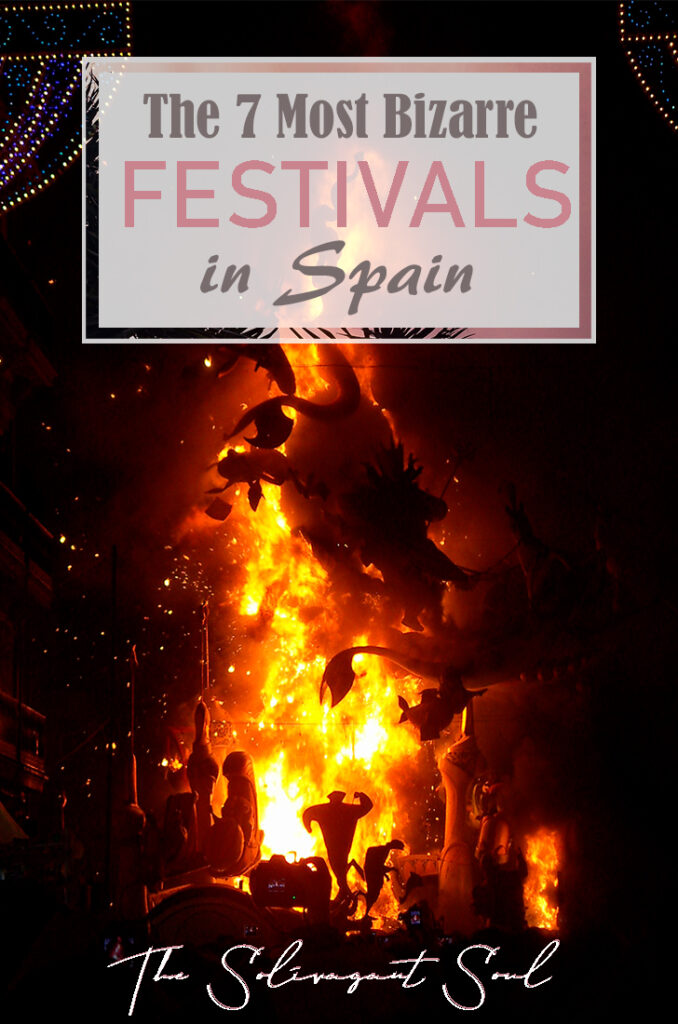
Fallas Valencianas, Valencia
Where?
Valencia
When?
From March 15th to the March 19th. Although the show starts from the last weekend of February.
Why?
Historically, the eve of Saint Joseph’s day (March 19th) people would start bonfires at night to celebrate it. Often carpenters would just throw there their useless pieces of wood to make space in their ateliers for new pieces. Additionally, since it was a couple of days before the start of Spring, they would also burn their “parots”, structures that they hanged from their lights. With this act, they would signal that they would no longer work at night, since with every day they would have more hours of daytime. Over time, these “parots” were shaped as humans. And that’s how the Fallas were born.
What are they?
Even though this may not be one of the weirdest festivals in Spain, the Fallas of Valencia is one of the most popular. During this festivity, a series of sculptures will be presented on the street for people to see them. These are prepared for months before the Fallas, and they are judged before the day they will burn. The winner one will be the only one that won’t burn. These are stored in a museum.
While fallas originally just depicted men and women, today they are most often satirical pieces that take into consideration recent events. Political. Health-related and more. They are fun to watch, specially if you know a little bit about the current Spanish culture. Then they go from a strange thing to definitely high in the list of weirdest festivals in Spain.
Because Valencians also love their firecrackers, this weird festival also includes a massive event dedicated to fireworks. They happen during the day so most colors can’t be really appreciated. It is just about the noise. And for some reason, they love it.
Where to stay?
A cheap alternative where you can stay in Valencia is Casa Floresta. The price for one week in low season is below 200€, but these are likely to get higher during Fallas. On the other end, you have Cosmo Hotel Boutique. This wonderful hotel it’s in the center of the old town and great to explore by foot the city. Beside luxurious beds, there is also a great terrace by the penthouse that is delightfull.

Santa Marta de Ribarteme en As Neves, Pontevedra
Where?
As neves, in Galicia
When?
The day of Santa Marta (Saint Martha), July 29th.
Why?
Santa Marta was the sister of Lazarus, who was brought back from the dead. The people in this town believe that they are protected by these saints and celebrate that they are alive. As simple as that.
What is it?
This is what in my opinion makes this celebration rank high in the list of weirdest festivals in Spain. Or at least the creepiest. In As Neves, every year, there is a parade of coffins, with living people inside them. I have nothing else to add. This strange parade will at the church where the priest will give a mass.
Where to stay?
This is a tiny town, so the offer for accommodations is quite small. The best option you have is to stay in a nearby town or city and then travel there the day on July 29th. But you will most likely need a car, since in Galicia the public transportation is somehow lacking.
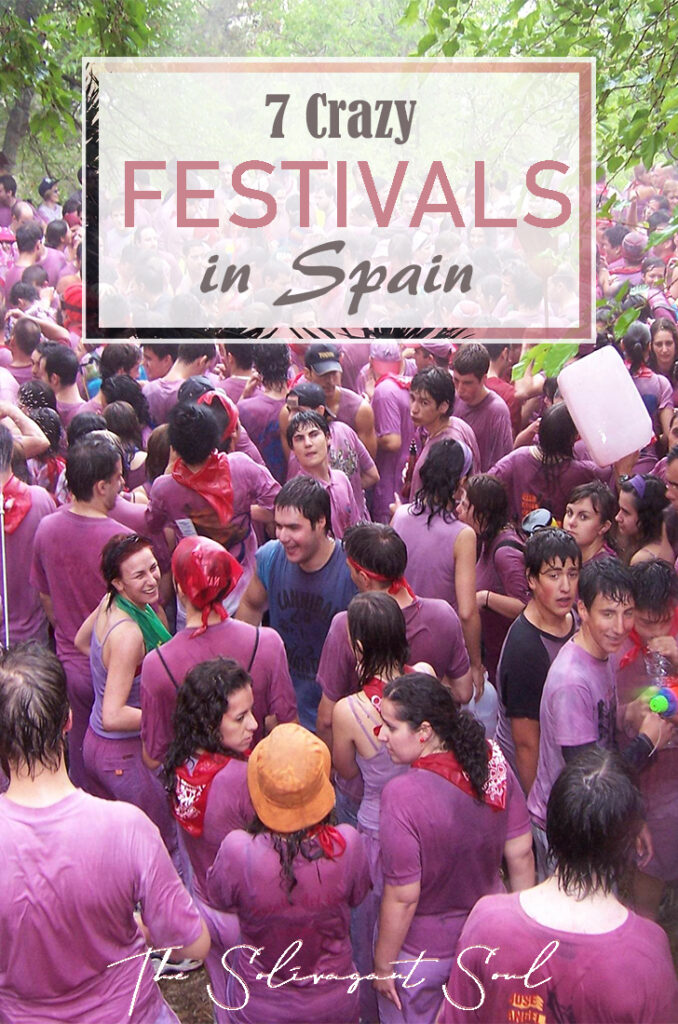
Batalla del vino de Haro (Haro’s wine fight), la Rioja
Where?
Haro, La Rioja
When?
June 29th, Saint Peter’s Day.
Why?
It all started with the people gathering after the mass of Sain Peter to have a light lunch by the little church. Wine was common and people often started to party and to celebrate by throwing wine to each other. With time, this became the tradition that today is the Wine Battle of Haro.
What is it?
Well, this may not be the weirdest festival in Spain but it may be one of funniest. People dresses in white, then party while throwing wine to everyone until there’s not a speck of white left and everyone is covered in purple.
Where to stay?
Haro is a small town so the offer is not ample. An interesting option is Eurostar Los Agustinos, a high-end hotel with an impressive restaurant and with a the luxurious style. A cheaper alternative are Touristic Apartments of Haro. These are cheap, but clean and well located. A nice an economical alternative.
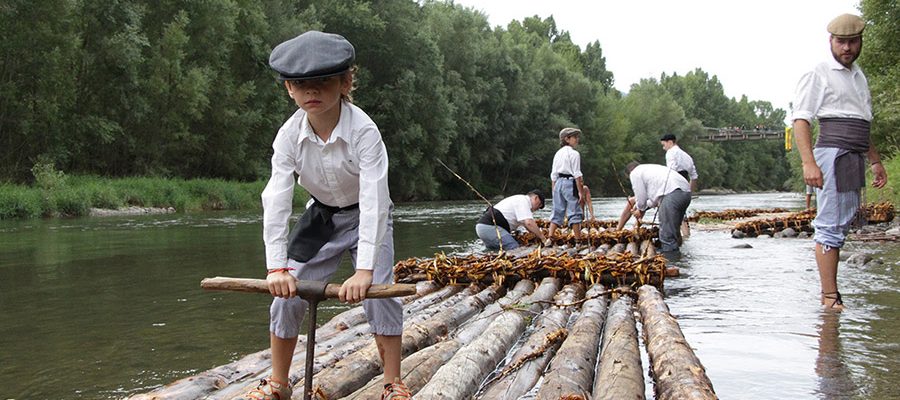
Baixada dels Raiers at Coll de Nargó, Lleida
Where?
Coll de Nargó, Alt Urgell, Lleida
When?
July 5th
Why?
Centuries ago, the “Raiers” would bring the wood from the Alt Urgell to the coast and to other areas of Catalonia by creating small boats and just floating down the river with them. Today, they do it as a reminiscent of this historical work. Even though people may not consider this the weirdest festivals in Spain, I believe it is historically quite interesting.
Where to stay?
The options for accommodation are ample along the Alt Urgell since it is a common location for hikers in the summer and ski lovers in winter. Also, because of that, they are a bit more expensive than in other areas.
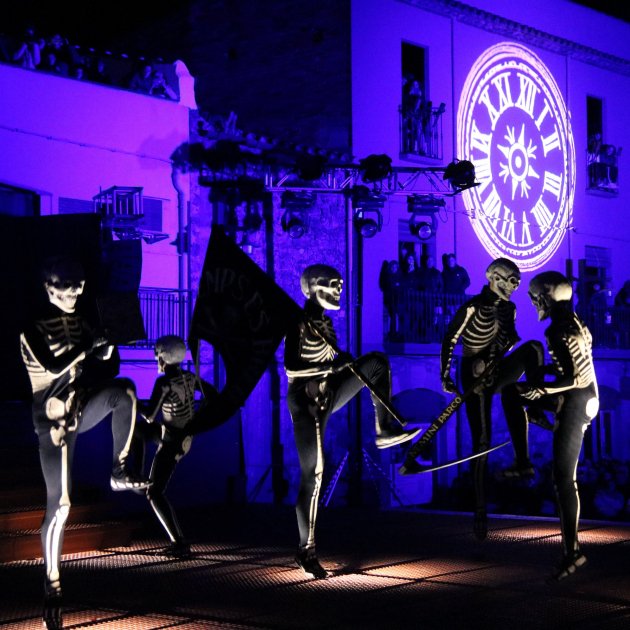
La dansa de la Mort (The Dance of the dead), Verges
Where?
Verges, Girona, Catalonia
When?
The Thursday before Easter
Why?
This is the representation of the “Dance of the Dead”, an artistic piece that was often represented across all Europe the 14th century. Even though it no longer is part of Christian celebrations across Europe, they still happen in Verges. This may be one of the oldest and weirdest festivals in Spain.
What is it?
Five people dressed as skeletons are will dance to the rythmic sound of some drums. They dance. Then they stop. And they do that throughout a small parade. This is meant to represent that death is what unifies us all. That independently of our rank or social status, is the only thing that brings us all together and that we all share.
Where to stay?
This weird and strange festival in Spain happens near some of the greatest beaches in the country: the great Costa Brava. Accommodations by the coast are often quite expensive, although there are some interesting alternatives in other towns. If you decide to visit the Dance of the Dead, you can stay at Verges itself, your best opino must be Ca la Teia, a beautiful little cottage typical from Catalonia. A more expensive alternative at a nearby town is URH – Hotel Molí del Mig (Halway windmill hotel). There, you will find modern rooms at an unbeatable location and only 15 min away the beach.
Did you know these weirdest festivals in Spain?
Let us know in the comment section!











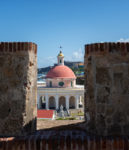
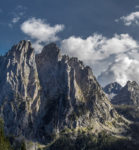
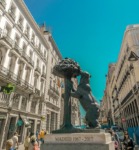
Love this! The strangest one I saw was in El Prat, Barcelona. They had a harvest festival and at the back of the parade was a tiny child dressed as an asparagus! 😀
Hahaha Was that maybe around February? Because that may be Carnaval, when many children go outside in costumes!
I would love to go to that tomato festival! It looks like a lot of fun although quite messy!
You hadn’t heard about the tomatina before? It is a very fun event!